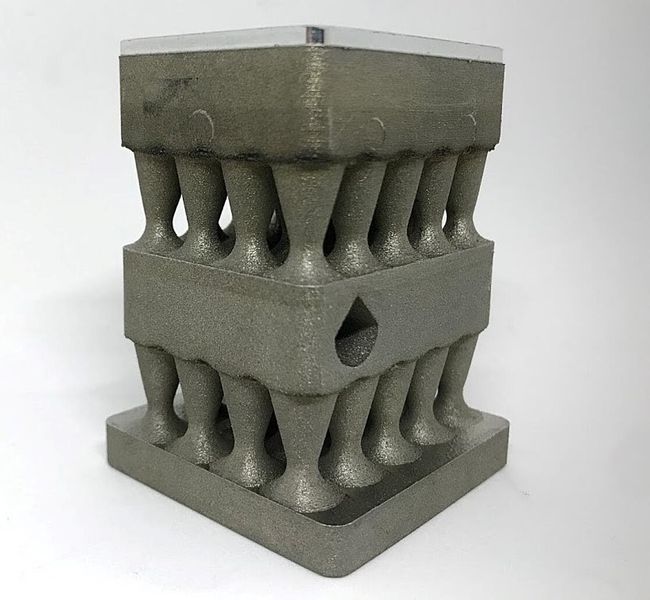
Fabrisonic described a very unusual project in which they employed two different 3D printing processes.
Fabrisonic has one of the most unusual 3D printing processes: UAM, or Ultrasonic Additive Manufacturing. In UAM two pieces of metal are fused together using ultrasonic vibrations. There’s no heat, no binder, just vibrations that allow the metal molecules to bond to each other in a very strong fashion.
The UAM process has some very unique properties, not the least of which is its ability to bond metals of different types together. This is something that would be impossible using most other forms of metal 3D printing.
However, like most 3D printing processes, UAM has both advantages and disadvantages. One of the disadvantages is that you’re restricted to making mostly flat objects, as the metal is bonded together in sheet form. This laminar approach is certainly useful for many projects, but not all.
That’s when you must invoke different 3D printing processes. LPBF, or Laser Powder Bed Fusion, is a popular process for 3D printing metals and is used by many other vendors. While that process is challenged to produce larger objects that are easily made using UAM, LPBF is capable of producing detailed smaller structures with arbitrary geometry.
UAM and LPBF
In a recent project Fabrisonic was challenged to produce a very unusual part. They describe the requirements:
“For this project, the customer was looking for:
An organic stainless steel geometry
Dissimilar metal transition
Embedded sensors fully encapsulated in metal.”
Well, that sounds rather challenging. UAM could not build this object. But neither could LPBF.
The answer was to combine both approaches together to produce the final object. This is something 3D print operators sometimes don’t realize, but just as you might combine other making tools like injection molding, CNC milling and 3D printing, you can also combine different 3D printing processes on a single project.
To solve this project, Fabrisonic had the stainless steel geometry portion produced separately using the LPBF process. Then these parts were subjected to a UAM treatment.
Fabrisonic first milled flat a surface on the LPBF objects to create a “build platform” for the UAM steps to follow. This allowed them to attach a series of metal layers to the 3D printed part with UAM that included alternating layers of aluminum and copper, something that could definitely not be done with LPBF.
Partway through the UAM print on top of the LPBF object, the operations were paused. A CNC mill then cut a pocket into the UAM layers into which a sensor was deposited.
The UAM process resumed, applying layers on top of the print and sealing in the sensor with solid metal. Eventually sufficient layers were applied to complete the part.
Fabrisonic says:
“By printing over this pocket, the sensor was encapsulated in the part and protected by the hermetic seal produced by the additional layers bonding to the surrounding metal. This improves the accuracy of the sensor’s readings as it is located at the exact location the customer needs information. At the same time, the seal enhances the life of the sensor.”
The result is shown at top, where the LPBF portion is at the bottom and the UAM sensor section is at the top.
This is quite an incredible project, as I am sure the first receivers of the request were baffled as to how this could possibly be made. However, by an ingenious combination of 3D printing processes, the impossible came true.
The next time you encounter an impossible part, consider the possibility of using multiple 3D printing processes.
Via Fabrisonic
